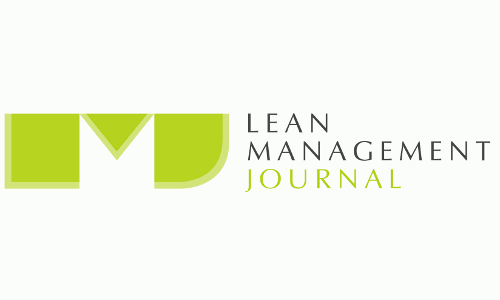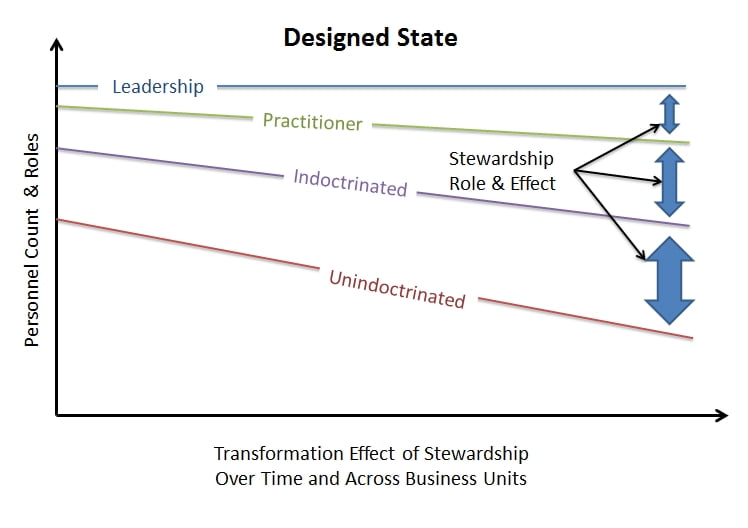12 Common Mistakes that Minimize Project Impact and How to Protect Against Them
![]() CONTENT PARTNER CONTRIBUTION
CONTENT PARTNER CONTRIBUTION
As seen in the Jun-2015 edition of the
Lean Management Journal
 Projects are critical to develop new capabilities, transform existing processes, or implement new technologies, and many companies are investing significant resources in project planning and execution. In many cases, a formal programme management office is charged with overseeing the projects, but the actual return on this investment is less than it could be. In almost every case, the causes of sub-par results are the result of poor decisions. The following list highlights the most preventable failure modes and what can be done to prevent them:
Projects are critical to develop new capabilities, transform existing processes, or implement new technologies, and many companies are investing significant resources in project planning and execution. In many cases, a formal programme management office is charged with overseeing the projects, but the actual return on this investment is less than it could be. In almost every case, the causes of sub-par results are the result of poor decisions. The following list highlights the most preventable failure modes and what can be done to prevent them:
- Stop and go: Frequently putting the project on hold does wonders to destroy morale and lose momentum. In almost every case it is better to allow the project to move forward. Perceived gaps are oftentimes better addressed through subsequent projects that build on what has been accomplished with the initial project. Stop-and-go issues point to governance issues and should be addressed as soon as possible. Putting a project on hold should be a last resort.
- Waiting for the subject matter expert: Lack of subject matter expertise is a real issue. How can a project team deliver if they don’t have access to those who know the topic best? In reality, subject matter experts are often not available, delaying important programmes. Making subject matter experts accessible is a responsibility of the governance team and a real test of the commitment to the project at an early stage. In the short run, the governance team needs to address the issue of how to backfill key resources; in the long run, a rotational programme where high potentials rotate through key functions on a periodic basis can help address the issue and widen the pool of those who can provide subject matter expertise.
- Keep changing the team: Changing at least one-third of the team members every three months should do the trick – the dual challenge of bringing new team members up to speed and transferring knowledge from those departing will frustrate even the most experienced project lead. Unless there are issues within the team, it is better to stay the course and protect the resources dedicated to the project. Accelerating the project timeline (and reducing the project scope) can also help to address the issue as well. It is easier to keep a project team intact and move forward with shorter project durations. A multi-generational approach to project scoping can help protect against this failure mode.
- Too many cooks into the kitchen: In many organisations, a number of departments are chartered to help the project team. IT provides business analysis resources. The strategic programme office creates the templates and standards. The project management team supplies experienced project managers. Internal consultants help with change management or process design. Oftentimes, the roles and responsibilities of the different cooks are neither well defined nor understood. The result: turf wars that will immobilise every single project. Those charged with governance will benefit greatly from clarifying the roles and responsibilities of the various players. The project lead is ultimately the customer for the various internal groups supporting the project and should have authority to escalate issues to the governance team.
- Overlapping projects: It is quite common to find a couple of projects that overlap. One project aims to redesign the existing process, while the other one has been chartered to develop the future state process, and a third one looks at outsourcing the entire thing. Sometimes overlap is unavoidable; however, the overlap needs to be explicit and the redundancy needs to be actively managed to minimise confusion and competition. Having the same governance team overseeing all projects and being clear about how conflicts will be resolved are critical to overcome this failure mode.
- Delaying decisions: Want to to decrease team morale quickly? No better way than delaying decisions to think it through. A default to action rule that allows the project leader to make the decision if the sponsor does not respond within a given timeframe can work wonders to accelerate execution.
- Unclear vision: Lack of clarity regarding a project’s scope and its benefits typically leads to failure. If the key stakeholders of the project cannot articulate what the project is all about, take a time-out before launching the project to make sure everybody is on the same page. Every single member of the governance team should be aligned to what the project is supposed to accomplish.
- Confusing redesign and transformation: Is the team expected to deliver real transformation or are you looking for incremental changes? Expecting transformational results but asking for an incremental approach is a recipe for disappointment. Defining upfront what success looks like and how much change is acceptable helps to minimise frustration and rework.
- No facilitation: Facilitating project and governance teams is typically considered a low value activity. Many think, “We have great people, what do we need facilitators for?” but that’s not the case. Facilitators who are experts in project team facilitation and not invested in the status quo can help accelerate projects significantly. Facilitators accelerate team development, a critical foundation for moving forward quickly.
- No clear linkage to strategy: Projects that do not have a clear rationale as to how they support the overall strategy have a low likelihood of success. The governance team should be very clear about what the linkage of the project to key business outcomes is, otherwise it might be better to kill the project and instead focus the scarce resources on the projects that can help move the needle.
- Focus on what to do but not on how to do it: Many companies focus too much on governance and rules and less on capability building and execution. While governance is important to ensure appropriate use of scarce resources and accountability, that in itself is not sufficient. Investing in capability building through formal training and informal coaching and focusing project teams on rapid execution instead of endless analysis is critical.
- Sponsor fatigue: Sponsors are typically very energised and engaged early on in a project but lose interest over time as other issues demand their attention. Project teams should be empowered to insist on active sponsor engagement. Oftentimes, the typical tollgate structure needs to be complemented with frequent, informal meetings with the sponsor to maintain alignment.
Good project governance is the underlying cause for most of these failure modes. Investing in team building and training for governance teams can help prevent the issues that lead to project stalling or failure. In addition, using a facilitator with extensive experience in organisational transformation enables the governance team to provide more effective guidance.
By Thomas Bertels
Thomas Bertels is the managing partner of Valeocon Management Consulting. Experienced management consultant with fifteen years experience helping global clients achieve sustainable business results. A recognized expert on operational excellence, metrics, and innovation, I help executives and teams at all levels define problems, develop strategies, as well as design and implement practical solutions. Connect with him on LinkedIn.
CONTENT PARTNER CONTRIBUTION![]()
As seen in the Jul-2015 edition of the
Lean Management Journal






